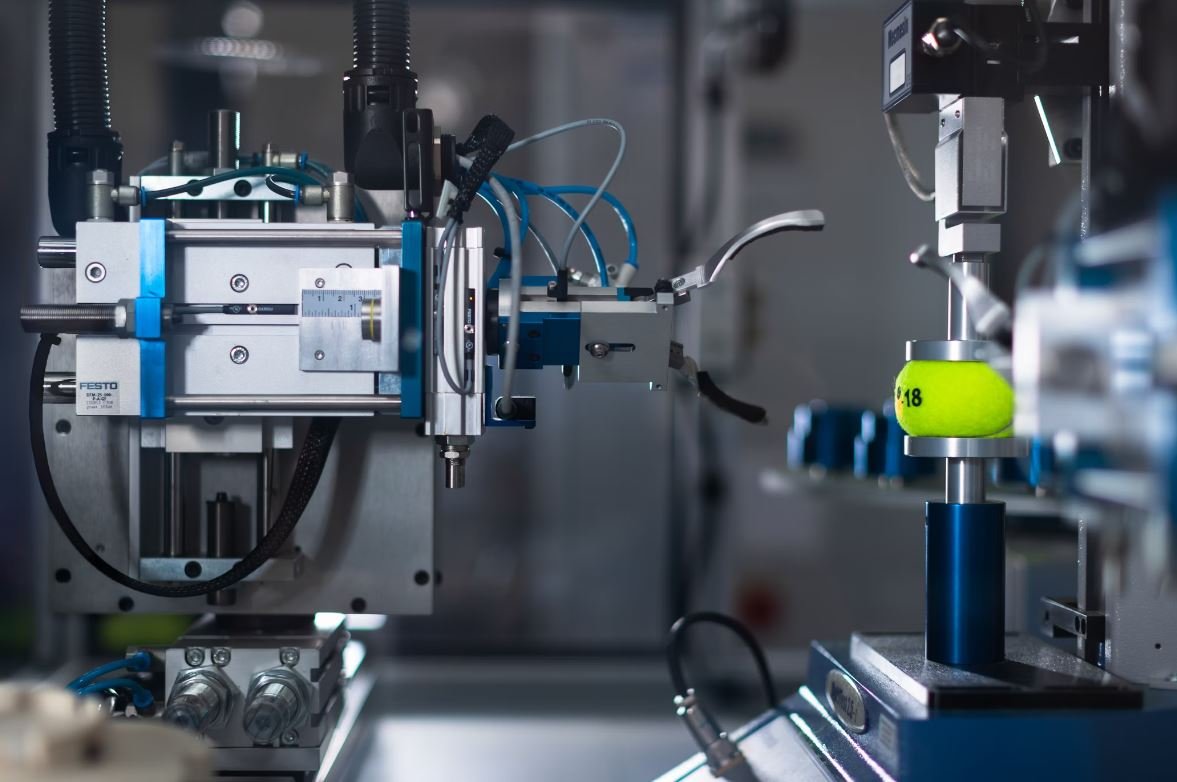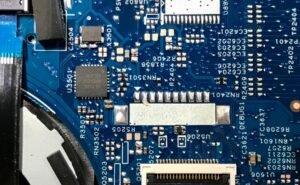Gigafactory to Reno
The Gigafactory is a large-scale lithium-ion battery and electric vehicle (EV) manufacturing facility located near Reno, Nevada.
Key Takeaways:
- The Gigafactory is a massive facility focused on producing lithium-ion batteries and electric vehicles.
- It is located near Reno, Nevada and is operated by Tesla and Panasonic.
- The factory is aiming to revolutionize the energy industry and accelerate the transition to clean energy.
The Gigafactory project was envisioned by Tesla CEO Elon Musk, with the goal of creating a facility that can produce lithium-ion batteries at an unprecedented scale. The factory, a collaboration between Tesla and Panasonic, is strategically located near Reno, Nevada, due to its favorable logistics and access to renewable energy sources.
*The Gigafactory aims to produce more lithium-ion batteries by 2020 than were produced in the entire world in 2013.*
The Gigafactory is not only a manufacturing facility but also serves as an energy storage research and development center. It combines advanced production techniques, cutting-edge research, and sustainable energy practices to deliver high-quality batteries for Tesla’s electric vehicles and stationary storage systems.
Factory Statistics
| Location | Size | Employees |
|---|---|---|
| Reno, Nevada | 1.9 million square feet | Over 7,000 |
With an estimated cost of $5 billion, the Gigafactory is designed to achieve energy efficiency and sustainability. It is powered by renewable energy sources, such as solar and wind, to minimize its carbon footprint. The factory’s green initiatives include water recycling systems, on-site battery recycling, and the use of sustainable construction materials.
Battery Production Capacity
| Battery Packs | Vehicle Output | Storage Capacity |
|---|---|---|
| 35 GWh per year | 500,000 EVs per year | 20 GWh per year |
*The Gigafactory is on track to become the biggest building in the world (by footprint) and the second-largest building by volume.*
In addition to its contributions to the electric vehicle industry, the Gigafactory has also had a significant impact on the local economy. The factory has created thousands of jobs in the region and has attracted other businesses and investments to the area. This has stimulated growth and development in Reno and the surrounding communities.
By establishing the Gigafactory, Tesla has positioned itself as a leading player in the clean energy revolution. The facility’s impressive scale, commitment to sustainability, and technological advancements make it a key driver for the mass production of electric vehicles and energy storage systems.
Charging Infrastructure
- Tesla is also investing in a global network of Supercharger stations to support long-distance travel for electric vehicles.
- As of 2021, there are over 25,000 Superchargers worldwide.
With the Gigafactory in Reno at the forefront of these efforts, Tesla continues to push the boundaries of what is possible in the world of clean energy and transportation.

Common Misconceptions
Misconception 1: Gigafactory to Reno is solely focused on electric car production
One common misconception about the Gigafactory to Reno is that it is only dedicated to the production of electric cars. While it is true that Tesla’s electric cars are a significant aspect of the factory’s operations, there are actually several other products and components manufactured at the facility.
- Lithium-ion batteries for energy storage systems
- Solar products such as solar panels and solar roof tiles
- Powertrain components for electric vehicles
Misconception 2: Gigafactory to Reno is the largest factory in the world
Another common misconception is that the Gigafactory to Reno is the largest factory in the world. While the factory is undeniably massive in size, it does not hold the title for being the largest in terms of physical area or overall production capacity.
- World’s largest factory is the Boeing Everett Factory in Washington, USA
- The Gigafactory to Reno is one of the largest buildings by footprint globally
- However, it is not the largest in terms of volume or total area covered
Misconception 3: Gigafactory to Reno only benefits Tesla
Some people mistakenly believe that the Gigafactory to Reno is exclusively beneficial to Tesla, without any positive impacts on the local community or other industries. This misconception fails to acknowledge the economic and employment advantages brought by the factory to the Reno-Sparks region.
- Creation of numerous job opportunities in manufacturing, engineering, and other related fields
- Increased business and revenue for local suppliers and service providers
- Stimulus for infrastructure development and improvement in the surrounding area
Misconception 4: Gigafactory to Reno is entirely fully operational
Many people assume that the Gigafactory to Reno is already operating at its full capacity and producing products at maximum efficiency. However, it is important to note that the factory is being built in phases and is not yet fully completed.
- As of now, the factory is in its second phase of construction
- Future plans include expanding the facility to become one of the largest buildings globally in terms of physical area
- Additional production lines and products are expected to be added in the future
Misconception 5: Gigafactory to Reno only benefits the United States
While the Gigafactory to Reno is located in the United States, it is not exclusively beneficial to the country itself. Tesla has a global presence and the products manufactured at the factory are exported to various countries around the world.
- The factory’s operations contribute to the global transition towards renewable energy
- Products manufactured at the Gigafactory to Reno are sold internationally
- Positive environmental impact is not limited to the United States alone

Gigafactory to Reno
As part of Tesla’s efforts to revolutionize the electric vehicle industry, the company established the Gigafactory in Reno, Nevada. The Gigafactory serves as a hub for the production of batteries and energy storage products. Let’s explore some fascinating aspects of this cutting-edge facility:
Renewable Energy Consumption
The Gigafactory’s commitment to sustainability is evident in its renewable energy consumption. It derives power from on-site solar panels, wind turbines, and geothermal systems. This self-sustaining energy infrastructure allows for an environmentally friendly production process.
Total Area
Occupying a staggering area of 5.3 million square feet, the Gigafactory is one of the largest buildings in the world. Its massive size enables efficient assembly lines for battery production and storage, ensuring timely deliveries of Tesla’s products.
Battery Production Capacity
With an annual battery production capability of 35 gigawatt-hours (GWh), the Gigafactory plays a crucial role in meeting the demand for Tesla’s electric vehicles. This significant capacity emphasizes the company’s commitment to clean and sustainable transportation.
Employees
The workforce at the Gigafactory consists of thousands of dedicated individuals. Tesla provides employment opportunities for people from various backgrounds, fostering an inclusive and diverse workplace. The collaborative efforts of these employees contribute to the success of the facility.
Supply Chain Management
An effective supply chain management system is essential to ensure seamless production and timely delivery. Tesla’s Gigafactory optimizes its supply chain, partnering with reliable suppliers to obtain quality raw materials and components necessary for battery production.
Waste Reduction
The Gigafactory implements sustainable waste reduction practices, aiming to minimize its environmental footprint. Through recycling programs, waste diversion strategies, and eco-friendly manufacturing processes, Tesla strives to create a zero-waste facility.
Local Economic Impact
The establishment of the Gigafactory has had a significant impact on the local economy in Reno. It has created job opportunities, attracted investments, and contributed to the growth of related industries, bolstering the region’s economic prosperity.
Research and Development
Beyond manufacturing batteries, the Gigafactory also serves as a hub for innovation and research. Tesla’s engineers and scientists work tirelessly to develop next-generation battery technology, pushing the boundaries of sustainable energy solutions.
Collaboration with Universities
Tesla actively collaborates with universities and research institutions to foster knowledge exchange and advance battery technology. These partnerships, which include joint research projects and internships, contribute to the continuous improvement of the Gigafactory’s manufacturing processes.
Community Initiatives
Tesla recognizes its responsibility to the local community and actively engages in community initiatives. The Gigafactory partners with organizations to promote STEM education, support clean energy programs, and provide job training opportunities, ensuring a positive impact beyond its manufacturing operations.
In conclusion, the Gigafactory in Reno stands as a testament to Tesla’s commitment to sustainable energy solutions, job creation, and technological innovation. Through its massive battery production capacity, renewable energy consumption, and various community and environmental initiatives, the Gigafactory is a pioneering force in shaping the future of clean transportation and manufacturing.
Frequently Asked Questions
What is the Gigafactory?
The Gigafactory is a massive battery manufacturing plant owned and operated by Tesla, Inc. It is designed to produce electric vehicle batteries and energy storage products in large quantities.
Where is the Gigafactory located?
The Gigafactory is located in Storey County, Nevada near Reno. It covers an area of over 5 million square feet, making it one of the largest buildings in the world.
Why was Reno chosen as the location for the Gigafactory?
Reno was chosen for several reasons, including its proximity to Tesla’s vehicle production facility in California, availability of skilled labor, access to renewable energy sources, and the support offered by the state and local governments.
How many jobs does the Gigafactory create?
The Gigafactory has created thousands of jobs, both directly and indirectly. Tesla has employed a significant number of workers at the facility, and the construction and operation of the Gigafactory have also led to the creation of numerous support jobs in the local area.
What types of batteries are produced at the Gigafactory?
The Gigafactory primarily produces lithium-ion batteries for electric vehicles, such as those used in Tesla’s cars. It also manufactures energy storage products, including Powerwalls for homes and Powerpacks for commercial and utility-scale applications.
How does the Gigafactory contribute to sustainable energy?
The Gigafactory plays a key role in Tesla’s mission to accelerate the world’s transition to sustainable energy. By manufacturing batteries at a large scale, Tesla aims to drive down costs, increase availability of electric vehicles, and support the integration of renewable energy sources into the electrical grid.
Can I visit the Gigafactory?
Unfortunately, the Gigafactory is not open to the general public for tours. As it is a highly secure facility, visits are restricted to authorized personnel only.
How is the Gigafactory powered?
The Gigafactory is powered by a combination of renewable energy sources, including solar power from on-site installations and wind power from renewable energy providers in the region. Tesla has made significant investments in sustainable energy generation to minimize the environmental impact of the facility.
Is the Gigafactory the only battery manufacturing facility owned by Tesla?
While the Gigafactory in Nevada is the largest and most well-known battery manufacturing facility owned by Tesla, the company also operates several other Gigafactories in locations such as Shanghai, China and Berlin, Germany.
What is the future of the Gigafactory?
Tesla has plans to continue expanding and upgrading the Gigafactory in the coming years. The company aims to increase the production capacity of the facility and introduce new technologies and products to meet the growing demand for electric vehicles and energy storage solutions.




